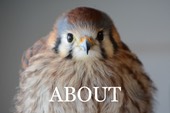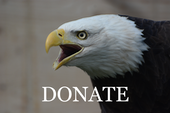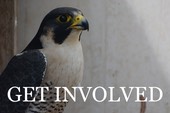Raining Raptors
The raptor count this past week was pretty amazing: 8 Barn Owls, 7 American Kestrels (most kidnapped), 6 Red-tailed Hawks, 1 Swainson’s Hawk, 1 Peregrine Falcon, 2 Western Screech Owls and 2 Great Horned Owls. Most of the raptors were babies, and about half of the babies were injured when they fell from the nest or crash landed while learning to fly.
Please Call Before You Rescue
A series of storms blew through the region this past week resulting in many baby birds being blown from their nests. Often times the youngsters are fledglings and it is not necessary to put them back in the nest. They just need to be up off the ground, safe from cats and dogs. The parents will still feed them. Many people think if you touch a baby bird the parents will abandon it. Not True!
Another misconception is how big baby birds are before they learn to fly and forage for food. They are essentially full grown. If you find a baby bird on the ground that is fully feathered, but cannot fly well, please call before assuming that it needs to be rescued. We can help you determine if it is injured.
Hoary Bat

This bat was found on the ground at a wind project and needed to be rescued. No broken bones were found during a physical exam, but a radiograph showed significant trauma on the left side of his chest. He is eating well and will hopefully make a full recovery.

Western Screech Owl With No Eyes
This poor young Screech Owl was found in an orchard near Prosser, WA. He has eyelids, but no eyes. It is not known if the condition is due to a toxin in the environment, or a genetic abnormality.

14th Gunshot Victim Of The Year
An injured adult Peregrine Falcon was found in Yakima, WA. A radiograph showed that his broken wing was caused by shotgun pellets. Notice there are no metal fragments at the fracture site. The pellets are likely steel, rather than lead. Steel pellets do not fragment when they hit bone or other tissue, but retain their round shape. The wounds on either side of the wing at the fracture site indicate that the pellet past through the wing: there is a small entrance wound and a much larger exit wound.



Worst Injury
A question that is often asked during a school program is “what is the worst injury you have ever seen.” While it is true that we often see horrible injuries, what may appear to be a minor injury can result in the death of a bird. Such was the case of a Great Horned Owl this week. The owl was found on the ground near Ephrata, WA. She was unable to fly, but there were no obvious signs of injury. Volunteer Mark Hurd captured the owl and volunteers Ray Moss, Guislen Eager and Bob helped transport her to Pendleton. A physical exam revealed a small wound on her left wingtip. No fractures were seen on a radiograph. When the feathers were plucked from around the wound, the major and minor metacarpals were exposed. The middle section of each bone was dried out and nonviable. The wound was old, explaining why the bird was so thin. The damage could not be reversed. The owl would never fly again and was euthanized. In some ways, these cases seem more tragic than those with more obvious injuries.


The Mouse And Hawk Game
We had lots of visitors to the Pendleton Center this past week. Three classes of 2nd graders traveled from Central School in La Grande on Wednesday. A group from Hermiston Christian School came for a tour on Thursday. On Friday three classes of 1st graders came from Rocky Heights Elementary School in Hermiston. In addition to touring the center, the 1st and 2nd graders also dissected owl pellets and played the hawk and mouse game, where they learned how hard a raptor has to work to capture a meal.








